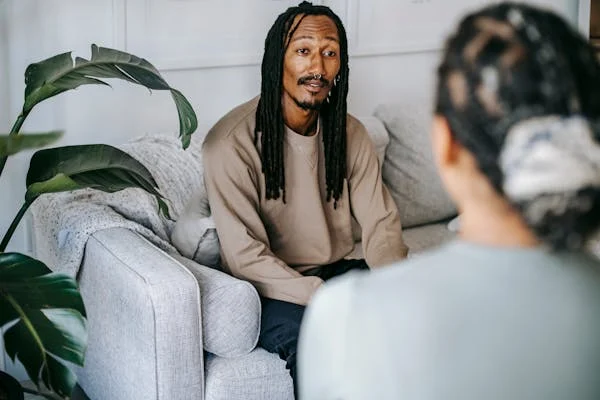Back pain is one of the most common painful and non-life-threatening conditions. It affects four in five Americans at some point in their lives. The good news is that back pain need not govern how you live your life.
If you have back pain, medication, exercise, and changes in your lifestyle are likely to offer the most relief. Surgery is useful in a minority of people
Other self-care steps you can take to mend your back include different types of exercise and complementary therapies such as chiropractic care, acupuncture, and massage, as well as choosing the right mattress.
What’s Causing My Back Pain?
When people talk about back pain, they usually refer to discomfort in the lower back. This area often experiences pain and tightness due to various reasons.
Back pain can be a symptom of many illnesses and conditions, either originating from problems within the back itself or from issues in other parts of the body. Sometimes, doctors cannot identify a specific cause. When a cause is identified, it is commonly attributed to:
- Muscle Strain or Injury: This includes sprains or strains of the back muscles, chronic overload due to obesity, or acute overload from activities such as lifting or pregnancy.
- Bone Issues: Diseases or injuries affecting the vertebrae, such as fractures from accidents or osteoporosis (a condition that thins bones).
- Degenerative Arthritis: This condition, often related to aging, injury, and genetic factors, involves a “wear and tear” process on the spine.
- Spinal Nerve Problems: Issues like nerve injury from a herniated disc (a cushion between vertebrae) or spinal stenosis (narrowing of the spinal canal) can cause pain.
- Kidney-Related Issues: Kidney stones or infections (pyelonephritis) can also lead to back pain.
Rarer causes of back pain include:
- Inflammatory Arthritis: Conditions like ankylosing spondylitis, which involve inflammation of the spine and other joints.
- Spinal Tumors or Cancer Metastasis: Cancer that has spread to the spine from another part of the body.
- Infections: These could affect the disc space, bones (osteomyelitis), abdomen, pelvis, or bloodstream.
When Should I Be Concerned About Back Pain?
Back pain varies in severity. Certain “red flag” symptoms may indicate a more serious underlying issue, including:
- Fever
- Recent trauma
- Unexplained weight loss
- A history of cancer
- Neurological symptoms such as numbness, weakness, or incontinence (involuntary loss of urine or stool)
If you experience these symptoms, contact your doctor promptly.
Additional symptoms associated with different causes of back pain include:
- Back Sprain or Strain: Pain often starts the day after heavy exertion or twisting activities. Muscles in the back, buttocks, and thighs may be sore, and tender spots may be present.
- Fibromyalgia: Characterized by widespread pain and stiffness in various body parts, including the back, neck, shoulders, knees, and elbows. People often feel unusually tired and experience specific tender points.
- Degenerative Arthritis of the Spine: Involves stiffness and difficulty bending, usually developing over many years.
- Inflammatory Arthritis: Includes lower back pain with morning stiffness in the back, hips, or both. Exercise often alleviates pain, and other symptoms may include psoriasis, eye pain, or diarrhea.
- Osteoporosis: Weakens bones, leading to fractures and potential stooped posture. Pain usually occurs only if a fracture happens.
- Protruding Disc: Can cause severe pain in the lower back that may radiate down one leg, worsening with bending or twisting.
- Spinal Stenosis: Causes pain, numbness, and weakness in the back and legs, worsening with standing or walking and relieved by sitting or leaning forward.
- Pyelonephritis: A kidney infection causing intense back pain near the ribs, potentially extending to the lower abdomen or groin, accompanied by fever, chills, nausea, and changes in urine.
How Do Doctors Diagnose Back Pain?
To diagnose back pain, doctors will review your symptoms and medical history, examine your back muscles and spine, and assess your movements for signs of pain, tenderness, weakness, stiffness, numbness, or abnormal reflexes. For example, if a disc issue is suspected, pain may occur in the lower back when the doctor raises your straightened leg.
Your symptoms and physical examination may help diagnose the problem, but additional tests might be necessary, especially if the pain persists beyond 12 weeks or if a serious condition is suspected. These tests may include:
- X-rays
- Blood tests
- Urine tests
- Spinal MRI
- CT scans
- Nerve conduction studies and electromyography
- Bone scans, particularly if there’s a history of cancer
How Long Does Back Pain Last?
The duration of back pain depends on its cause. For example:
- Muscle Strain: Pain from overexertion usually improves within days or weeks. Avoid heavy lifting and sudden movements during recovery.
- Pregnancy-Related Pain: Often resolves after delivery.
- Obesity-Related Pain: May require weight loss for relief.
- Kidney Infections: Symptoms typically improve within days of starting antibiotics, but a full course of treatment is often needed.
- Serious Conditions: Pain related to vertebrae or spinal nerves can last for months or even years.
What’s the Best Way to Prevent Back Pain?
Preventing back pain can be achieved through strengthening exercises and avoiding activities that may lead to injury. Key prevention strategies include:
- Regular Exercise: Strengthen your back and improve balance through activities that enhance strength and range of motion.
- Avoid Prolonged Sitting: Take breaks every 30 minutes if you sit for long periods.
- Good Posture: Maintain proper posture and use correct lifting techniques.
- Prevent Osteoporosis: Ensure adequate calcium and vitamin D intake, engage in weight-bearing exercises, avoid smoking, and limit alcohol. Postmenopausal women should discuss osteoporosis testing and prevention with their doctor.
What Treatments Relieve Back Pain?
For acute low back pain (less than 12 weeks), try:
- Heat therapy
- Massage
- Acupuncture
- Spinal manipulation (e.g., chiropractic care)
If these methods are ineffective, non-prescription NSAIDs like ibuprofen or naproxen, or muscle relaxants may be considered, although they offer modest benefits and can have side effects.
For chronic low back pain (12 weeks or more), consider:
- Exercise (including stretching, balance improvement, and core strengthening)
- Physical therapy
- Acupuncture
- Mindfulness-based stress reduction
Other helpful approaches include tai chi, yoga, or progressive relaxation techniques. NSAIDs or medications like duloxetine might be useful, but opioids are generally avoided for chronic pain.
When Is Back Surgery Needed?
Surgery is generally a last resort after conservative treatments have failed. Immediate surgery may be necessary if there’s progressive leg weakness or loss of bladder or bowel control.
Most acute back pain resolves within 6 to 8 weeks with conservative treatment. Surgery is considered when:
- Pain correlates clearly with abnormal imaging findings.
- Non-surgical options have failed for conditions like herniated discs causing sciatica or spinal stenosis.
Common surgical procedures include:
- Discectomy: Removing part of a herniated disc that presses on nerves.
- Laminectomy: Removing part of the vertebra to relieve pressure on nerves. This can sometimes be combined with spinal fusion if additional stabilization is needed.
Laminectomy alone is often as effective as spinal fusion and is preferred when feasible.








